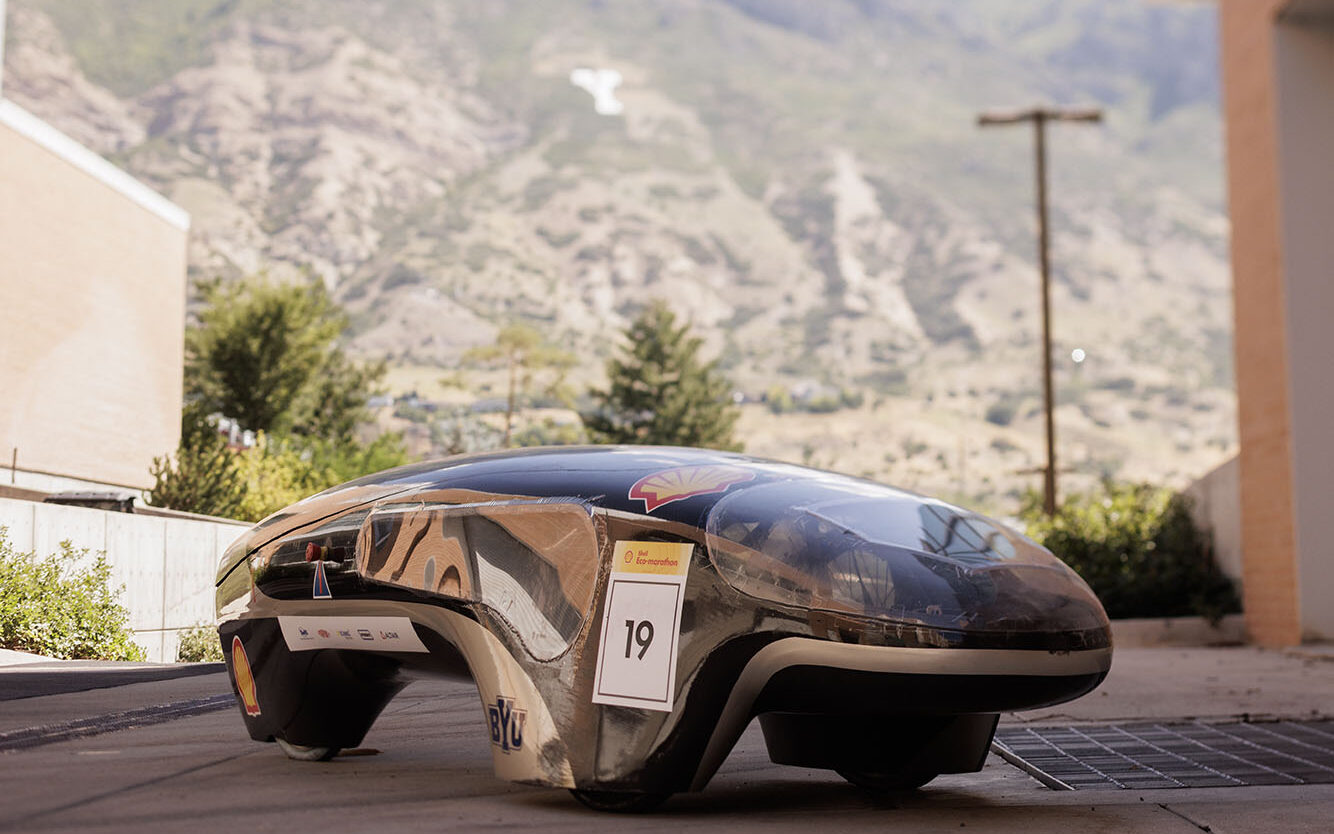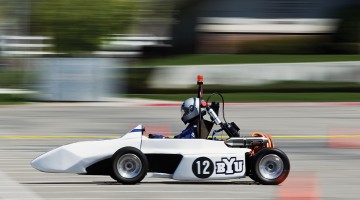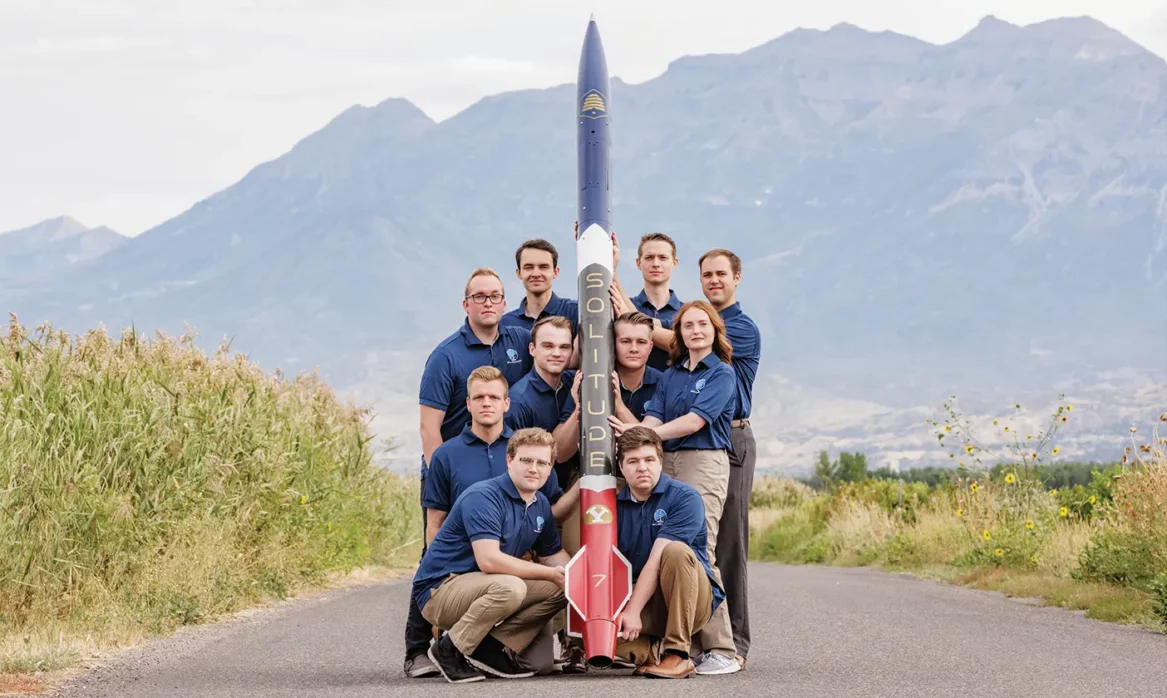
Worried about gas prices? The BYU Supermileage Team’s latest project might be the car for you—as long as you’re not trying to get anywhere fast. The team’s vehicle took first at the 2023 Shell Eco-Marathon, an international collegiate engineering competition for fuel efficiency hosted at the Indianapolis Motor Speedway.
Clocking in at a max speed of 25 miles per hour and registering 1,915 miles per gallon, the BYU supermileage car was more than 100 miles per gallon more efficient than the second-place contender. Take a look under the hood at the engineering that made this sleek lowrider a winner.
1
The humble horsepower of the vehicle. The base engine for the car was originally taken from a Briggs and Stratton lawnmower: “Everything inside of it except for the crankshaft has been changed and optimized for efficiency,” explains David R. Leavitt (’24).
14.7:1
The optimal fuel-to-air ratio, in grams, for the supermileage vehicle. An onboard computer regulates fuel injection to ensure that the car’s running at peak efficiency.
2×2× 8 ft.
The vehicle’s approximate dimensions. The bullet-like body minimizes air resistance, offering an extra margin of efficiency.
0.01 in.
The space between the brake pads and the rotors. “We could get way better gas mileage if we didn’t have to have any brakes,” laughs mechanical-engineering professor Dale R. Tree (BS ’86), the team’s faculty advisor. Designing brakes that ensure safety while minimizing friction was a challenge—though the driver, Brandon T. Christensen (’25), likely appreciated them.
65 psi
The car’s tire pressure at competition. “High pressure is helpful for rolling,” says Dakota M. Mundell (’24). “You also want enough cushion . . . so that gravel or rocks don’t jostle the car.”












